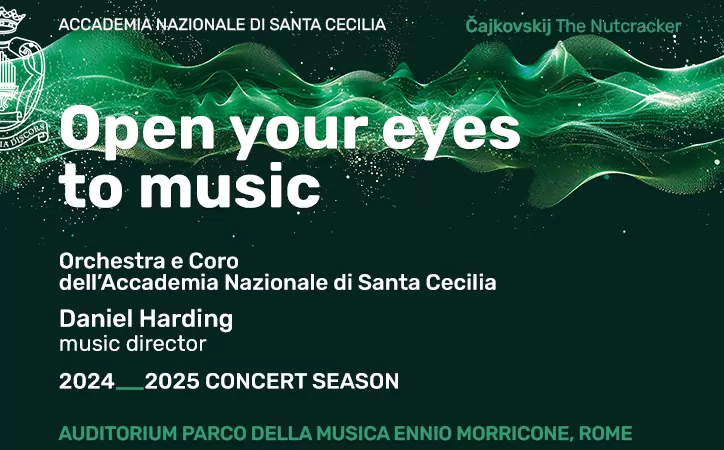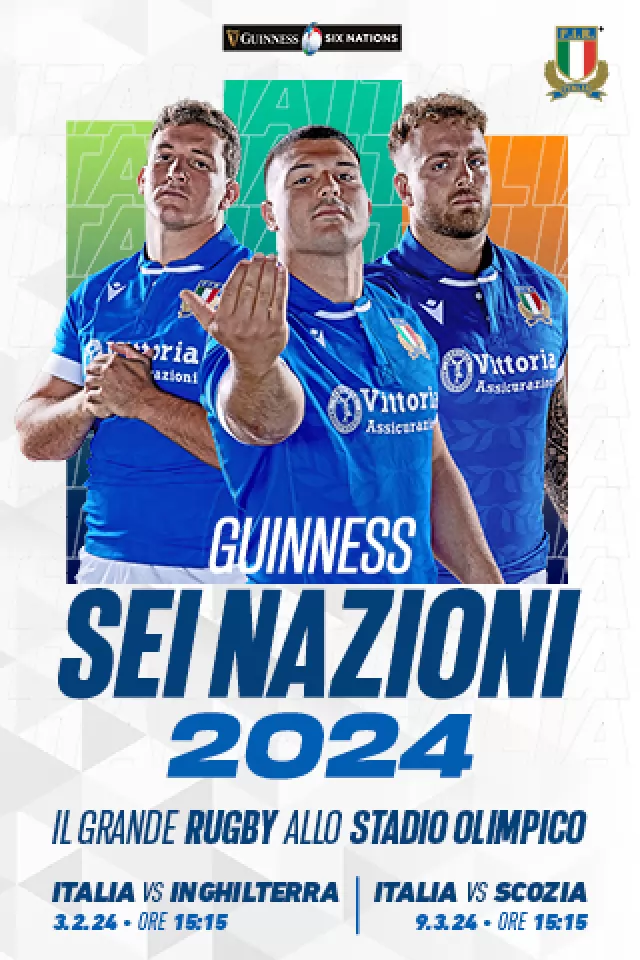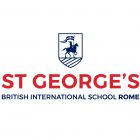A brief introduction to Rome's football derby.
Today, the city plays host to one of Europe's fiercest football rivalries, the Derby Della Capitale between A.S. Roma and S.S. Lazio.It has provided countless moments of tension and excitement, both on and off the pitch. The derby is a showcase of Italian football, a country as rich in history and passion for the sport as any other in the world. However, in this rivalry, what happens off the pitch often produces just as many headlines as what happens on it.
History of Rome's football teams
On the 9th of January 1900, the club S.S. Lazio was founded in the Prati district of Rome. Over the next decade, three more clubs would arise in the city: Roman FC (1901), SS Alba-Audace (1907), and Fortitudo-Pro Roma SGS (1908).Nearly thirty years later, the ruling National Fascist Party set in motion a plan to merge all four clubs to create one club that would represent the city. The idea was to create a unified club to represent the capital and challenge the clubs from the north of Italy, which have long dominated Italian football. However, the intervention of army general Giorgio Vaccaro, a member of Lazio and the Italian Football Federation, was able to keep Lazio separate. The three other clubs merged and on the 7th of June 1927, the club A.S. Roma was born.
The neighborhoods the clubs were born and settled in during their early years play a big part in the identities of both clubs. The neighborhood of Prati in the north of the city where Lazio was founded has traditionally been a prominent upper-class area of Rome. This led to Lazio being considered a club mostly for the bourgeois in their early years. Roma meanwhile was without a home for their first few years before eventually settling in the working-class neighborhood of Testaccio in Southern Rome. As a result, Roma was associated with the working class. While things have changed over the years, and calling all Lazio fans rich and Roma fans poor is an inaccurate generalization, the identities the clubs created during their early years are still somewhat present.
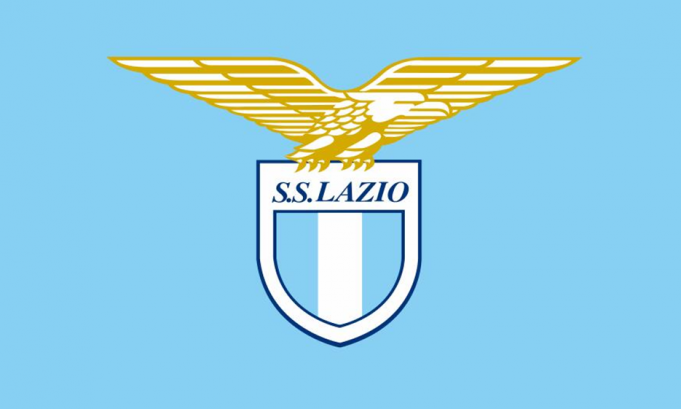
Roma meanwhile traditionally wears the colors red and gold, the official colors of the city of Rome, giving them the nickname I Giallorossi “The Yellow and Reds.” Their badge is a depiction of the she-wolf from the founding myth of Rome, which is why the club is also referred to as La Lupa “The She-Wolf.”
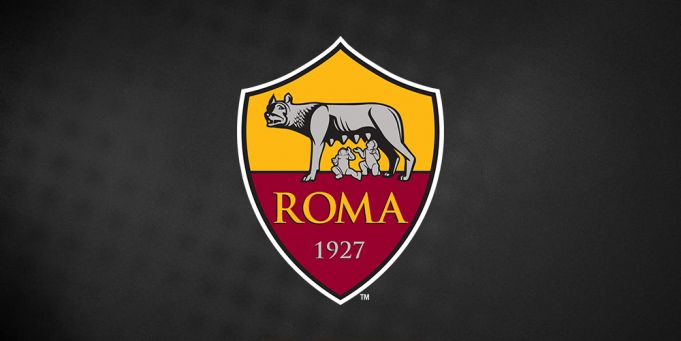
The Trophies
However, the intention of having a unified club to challenge the stronger ones in the north hasn't exactly worked out for either of them. Combined both clubs have won just over 30 trophies in their history.To put that into perspective, Italian giants Juventus have won 36 league titles alone, while Roma and Lazio have just five between them.
So, while both clubs have seen some success over the years, they still don't stack up when compared to Juventus, AC Milan, or Internazionale, the big three from the north. As a result, the rivalry has become more of a battle for regional pride rather than national excellence. The right to represent the capital of Italy is what's on the line when these two play, and it has led to some incredible moments and spawned legendary players over the years.
Fans of both clubs also take great pride in the Roman-born players that have represented them over the years. While they both have a long list to choose from, Roma especially has been known for their captains who come from the city.
One of the earliest examples was Amedeo Amadei, who was captain when Roma won their very first Scudetto in 1942. Alessandro Nesta and Francesco Totti are two more recent examples of players born in Rome who represented Lazio and Roma as captains.
Francesco Totti

He is considered one of Italy's greatest ever players, having worn the number 10 shirt for both club and country for most of his career. Totti also became famous for turning down massive contract offers from larger clubs during his prime, most notably from Spanish giants Real Madrid. He played his entire 28-year career for Roma, retiring in 2017 with the club he grew up supporting. Ph. Marco Iacobucci Epp / Shutterstock.com
Though, despite his unwavering love for Roma, Totti has always known when to put rivalry aside. On the 11th of November 2007, Lazio fan Gabriele Sandri was killed by police while traveling to Milan to attend a match between Inter and Lazio. This sparked wide demonstrations and protests against the police and even united both Roma and Lazio fanbases. Totti knew where to stand and attended Sandri's funeral. Surrounded by Lazio fans, he drew massive respect from everyone in attendance.
The two may share a fierce rivalry, but that doesn't mean that players from both teams don't get along. There are many examples of the opposite being true. Francesco Totti's relationship with former Lazio player Alessandro Nesta is a perfect example of this. The two may have been rivals on the field, but remained friends off the pitch, something that is surprisingly not uncommon in this rivalry.
Alessandro Nesta
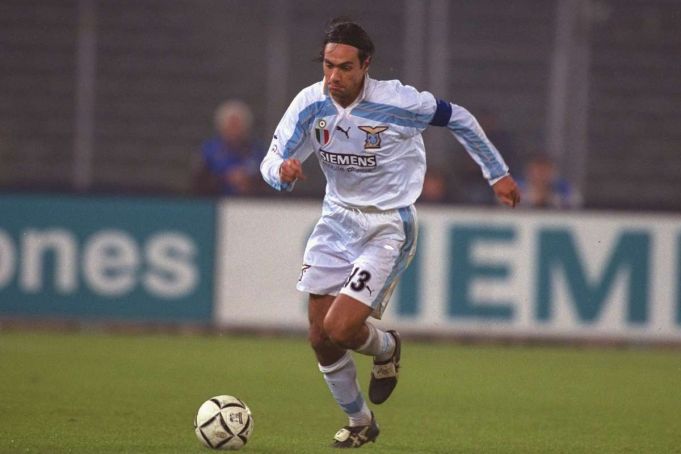
Lazio wins its last Scudetto in the 1999-00 season
After suffering through an abysmal decade in the 1980s, in which Lazio was relegated twice and nearly went down to the third division, the '90s proved to be much more fruitful. The club would go on to break transfer records several times after Sergio Cragnotti arrived in 1992, signing the likes of Paul Gascoigne, Christian Vieri, Hernan Crespo, and current Lazio manager Simone Inzaghi. This put Lazio in a prime position to compete for a Scudetto. They missed out by just one point to Milan in 1999, before winning their second Scudetto in 2000.The 1980s started much better for Roma, as they won their second Scudetto in the 1982-83 season. The next year, Roma were runners-up in Italy and won the Coppa Italia. That same season they made it to the final of the European Cup (The Champions Cup) but ultimately lost to Liverpool on penalties. The final was held in Rome.
AS Roma wins its last Scudetto in 2000-01 season
In 1991, Roma won their seventh Coppa Italia title and remained competitive in the league for much of the decade. The new millennia started as well as anyone could have imagined it for Roma. With former Roma player Fabio Capello at the helm, he assembled a team with the likes of Cafu, Gabriel Batistuta, Vincenzo Montella, and Francesco Totti as captain. The club won their third Scudetto in the 2000-01 season, edging out Juventus by just two points after beating Parma 3-1 on the final day.They had taken the crown back from Lazio in what has to be the best few years for football in Rome ever. It was also fitting that Lazio had a hand in Roma's success that season. In their first meeting that season, Lazio's Paolo Negro scored an own goal when he failed to clear a ball inside the box.
The goal gave Roma a 1-0 that day and they eventually went on to win the Scudetto, taking back the crown from their arch-rivals, and giving them a 3 to 2 advantage in league championships. Paolo Negro meanwhile remains a satirical icon amongst Roma supporters.
The years that followed would bring mixed fortunes for both clubs. Lazio faced a financial crisis in 2002 which forced Cragnotti out. The club was then forced to sell many of its star players, including captain Alessandro Nesta. Then, in the 2006-07 season, Lazio was involved in the infamous Calciopoli match-fixing scandal, forcing them to miss out on the EUFA-Cup that season.
Roma however would continue their good form for much of the next decade. While they were unable to capture another Scudetto, they finished runners-up in the league on several occasions, cementing themselves as a solid top-of-the-table club.
Then, on the 26th of May 2013, the two met in the Coppa Italia Final for the first time, in what is considered to be one of the most important derbies to date. Naturally, being a domestic cup final, it was played in the capital. So, the two squared off in one of the biggest matchups in the history of the rivalry in the city and stadium that they share and have battled for supremacy over for decades. The fixture was, to put it lightly, massive. A back-and-forth game ended with a goal from Lazio's Senad Lulic' that gave Lazio a 1-0 win.
Politics and the Ultras

The political views of a club are oftentimes based on its ultras, hardcore fans that are known for their passionate support and choreography at games. However, while the ultras may add to the atmosphere at stadiums, they have also been known for sparking controversy with their political views and criminal behavior that takes place both inside and out of their respective stadiums. Ph: Marco Iacobucci Epp / Shutterstock.com
Lazio is one example of a club that has long been known for its affiliation to right-wing politics, with some of their ultras claiming allegiance to fascism. This has brought the club plenty of controversy over the years, as the ultras have been known for their racist and anti-Semitic chants and displays both in the stadium and around the city.
While Roma has many different large groups of ultras that occupy the Curva Sud, Lazio has one large group in the Curva Nord. Lazio's main group of ultras was called Irriducibili Lazio. Founded in 1987, the group was known for being outspoken about its political views.
The Irriducibili
During a Rome derby in the 1998-99 season, Lazio's ultras unveiled a large banner in the Curva Nord that read "Auschwitz is your town, the ovens are your houses" about Roma's association with Italy's Jewish population. A similar anti-Semitic episode with Lazio happened in 2017 when stickers depicting Anne Frank in a Roma jersey were found at the Stadio Olimpico. Lazio ultras have also been known for racially abusing black players during games with monkey chants.This is not something that they reserve specifically for Roma players, but if you watch a derby between the two, you will certainly notice how the Lazio fans react when a black Roma player touches the ball.
While the number of Lazio fans who hold these racist and anti-Semitic views may be a minority of their fanbase, it continues to be a stain on the club. This was only heightened by a former Lazio player Paolo di Canio, who has been outspoken about his allegiance to fascism.
Di Canio was brought up through Lazio's youth system and played for their senior team from 1985-90, and again from 2004-06. Known for his temperamental character, which often put him at odds with teammates, coaches, and club executives no matter where he played.
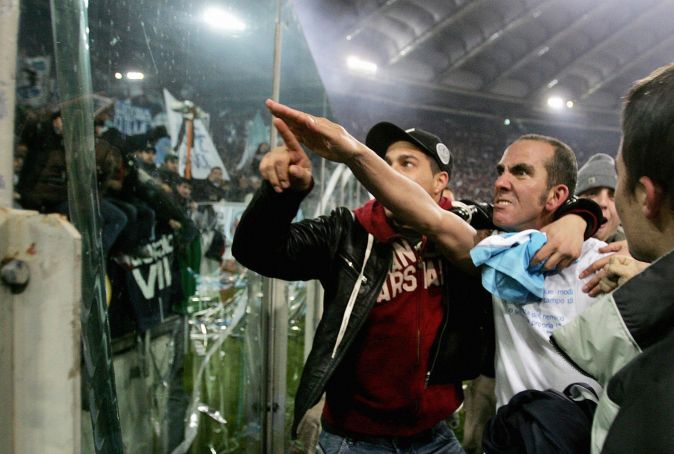
He made the fascist salute towards their fanbase several times during games and goal celebrations (see photo). This only increased the influence that the ultras had which, once again created a rift with his teammates and coaches. His contract was subsequently not renewed following the 2005-06 season.
In February of 2020, Irriducibili Lazio was formally disbanded. The leaders cited the reason for this decision as "too much blood, too many banning orders, too many arrests." The decision to disband came just months after their leader Fabrizio Piscitelli, also known as "Diabolik", was shot and killed in a park in a suburban neighborhood in Rome. His murder has been attributed to a drug dispute that was not related to the rivalry.
AS Roma's Ultras
Before the 1980s, A.S. Roma was a predominantly left-wing club. This makes sense considering that historically their fanbase has been largely working class. The main group of ultras affiliated with A.S. Roma was known as Commando Ultras Curva Sud (CUCS), one of the most historic ultras groups in Europe.CUCS was formed in 1977 when several smaller groups decided to unite under one banner. The group became one of the largest in the country by the 1980s and had a massive presence in Italy and all over Europe. In 1987 however, the group split into many smaller groups.
There are now four big ultra groups that occupy the Curva Sud: A.S. Roma Ultras, Boys and Giovinezza are all right-wing ultras groups. Fedayn, is the oldest of them all and is technically apolitical. Fedayn and Boys were once members of CUCS.
While Roma supporters are not known for their racist or anti-Semitic behavior, that doesn't mean that it is nonexistent among them. In 2012, before a Europa League clash between Lazio and the English side Tottenham in Rome, Lazio and Roma's ultras attacked a group of Tottenham supporters before the match. Tottenham has a long history of having a lot of Jewish fans, which is why they were targeted by both sets of supporters. Roma fans are more well-known for violence against opposing fans than Lazio. This is especially true when they go abroad for European matches, or when fans from abroad come to Rome.
Many clubs will warn their fans about traveling to Rome for an away fixture, as there have been many incidents of violence in the past.
Both sets of ultras have been known to create incredible atmospheres at matches, but especially for the derby. Flares, firecrackers, and smoke bombs are common at these games along with the choreographed tifos that are unveiled. Banners taunting the other side can be seen throughout the match, and both sets of fans belt out chants for the entirety of the game, often starting hours before.Derby violence
Unfortunately, the power that the ultras have has created some nastier moments over the years.In 1979, the first fatality as a result of violence in Italian football occurred when Lazio fan Vincenzo Paparelli was hit in the eye with a flare that had been fired from the Roma end. While this may have been completely accidental, it left an ugly scar on a rivalry that is no stranger to fan violence.
Another ugly episode came on the 21st of March 2004, when a fake rumor began circulating of a young boy who had been killed by police outside the stadium. The rumor sparked a pitch invasion by Roma ultras, who spoke to their captain Francesco Totti and demanded the game be called off (see photo). The match was suspended, and violence erupted in the stands and outside the stadium, with over 170 police being injured.

Derby tips for dummies
While the derby is a must-see spectacle for any football fan, it is important to understand the parts of the city to avoid on derby day to avoid trouble. Roma fans especially have been known for violence, and policing at these games is oftentimes not as good as it should be.For one, be sure to go to the game in a group, preferably with at least one person who knows the city and areas around the stadium. Lone fans are often the targets of stabbings around the stadium, even if they wear neutral colors. After the match, it's a good idea to get away from the stadium as quickly as you can as this is the area where clashes between fans are likely to occur.
Getting tickets for the derby can also be tricky. They tend to sell out quickly and there are a lot of unreliable websites and vendors trying to sell them. The most reliable way to get tickets would be online or in-person at either team's official shop. If you aren't Italian, you'll need to have your passport with you when you try to purchase them.
The Derby Della Capitale is one of the great spectacles in world football. The history between these two great rivals is vast, which is fitting when you consider the city they come from. While it may be some time before we see fans back in the stadium, that doesn't mean that the derby has lost any of its significance for the people who support either club. If you are an avid football supporter, or even just a casual fan, it is certainly worth witnessing in person when you have the chance.



